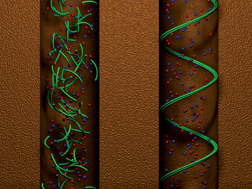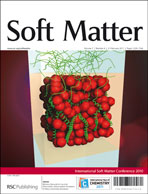The physical properties of interfaces between media with different dielectric permittivities are modified by the adsorption of charged particles. The adsorbed charges can be arranged into self-assembled nanostructures with properties that can be controlled by, for example, varying the ionic abundance of charged species in the media separated by the interface. The presence of inhomogeneous charge distributions at interfaces between media with different dielectric permittivity is a crucial feature of many interesting physical systems including clay, biological ion channels, and DNA-carbon nanotubes complexes. We describe here a general formalism using the electrostatic Green's function to compute the optimal arrangement of charges in cylindrical geometry. This geometry serves as model for a porous medium or a fiber. We study, in particular, the electrostatic energy of charged lamellar structures that cover the cylinder. We demonstrate that, under a variety of conditions, chiral helices are the preferred structure adopted by the lamellar system. These helices are more prominent in systems with higher permittivity in the interior of a tube separating two media, such as in porous media and ion channels, than in fibers with low dielectric interiors in aqueous media. We also analyze the effect of line tension on the surface pattern that competes with the charge-accumulation penalty upon the adsorption of polyions with hydrophobic groups.

You have access to this article
 Please wait while we load your content...
Something went wrong. Try again?
Please wait while we load your content...
Something went wrong. Try again?


 Please wait while we load your content...
Please wait while we load your content...